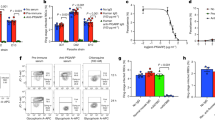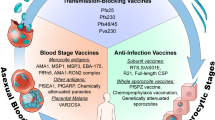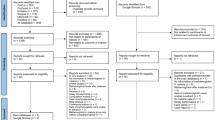Abstract
MAY I ask your courtesy for a brief reference to the article by Dr. C. W. Saleeby on the International Medical Congress (NATURE, August 14, pp. 608-9)? Dr. Saleeby notes, that recent research is tending in the direction of the views advanced by me some few years ago. How long will yet elapse before these views as to the germinal origin, trophoblastic (asexual) nature, and enzyme or pancreatic treatment of cancer are “generally accepted” cannot be said. But whenever that time does arrive, mankind in general and medical mankind in particular will have no other refuge against the ravages of cancer than its treatment with genuine strong injections of trypsin and amylopsin. Scientifically, what evidences are there of this? In the first place, among others, three successful cases treated by Major Lamballe were described in my book on cancer, published two years ago. It is quite four years since the patients were treated. Two of them are certainly alive and well, and I believe that this is also so with the third. More recently, I have pointed out, in a paper on the occurrence of dextro-rotatory albumins in organic nature, noticed not long ago in your columns, that the asexual generations, such as the malaria parasite, &c, which induce disease, are the same in nature as cancer-cells, and have foretold their total destruction by the ferments, trypsin and amylopsin. In a memoir, which is about to be published, Major F. W. Lamballe, R.A.M.C., has demonstrated the scientific truth of this. He has shown in a way which must carry complete conviction, that cases of benign and malignant tertian malaria, even very grave cases with cerebral symptoms, in all of which, as his results show, quinine had proved quite useless to stem the disease and to prevent relapses, from one to three injections of pancreatic enzymes sufficed not merely to kill all the parasites, but to cure the patient. Relapses in the patients—which had been the rule in very nearly all the cases—did not occur after this brief treatment, and the men (British soldiers) were able to return to duty at once, even in some instances on the day of the second or third injection. That is to say—and it is a matter for great scientific satisfaction—the original work, which I began in 1888, has now resulted in the easy and complete conquest of malaria. What this means can be understood from the facts concerning the treatment of malignant malaria, which at present is the rule in the Army. This entails a course of treatment by quinine lasting at least four months, and very often, if not always, even then the patient is not cured. But I understand that during this time the soldier is regarded as unfit for active service, and sometimes 25 per cent, of a regiment stationed in the tropics may be in this condition. In contrast to this the pancreatic treatment of malignant malaria in the hands of Major Lamballe entails not more than three injections, costing at the outside three shillings, it need not last two weeks, and the patient can return to duty at once, and so far as we know is then free from all danger of relapse, but not immune to a new infection. The facts here outlined indicate that, properly applied, that which cures malignant malaria must cure cancer.
This is a preview of subscription content, access via your institution
Access options
Subscribe to this journal
Receive 51 print issues and online access
$199.00 per year
only $3.90 per issue
Buy this article
- Purchase on Springer Link
- Instant access to full article PDF
Prices may be subject to local taxes which are calculated during checkout
Similar content being viewed by others
Author information
Authors and Affiliations
Rights and permissions
About this article
Cite this article
BEARD, J. The Nature and Treatment of Cancer and Malaria. Nature 92, 60–61 (1913). https://doi.org/10.1038/092060c0
Issue Date:
DOI: https://doi.org/10.1038/092060c0
Comments
By submitting a comment you agree to abide by our Terms and Community Guidelines. If you find something abusive or that does not comply with our terms or guidelines please flag it as inappropriate.



